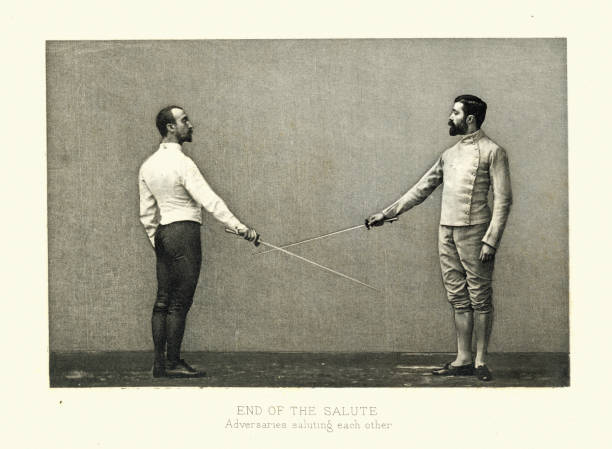The History of Fencing
Fencing is one of those sports that has fascinated people for centuries with its elegance, technical refinement, and historical importance. In this blog post, we will explore the origins, traditions, and transformation of fencing into a competitive sport.
The history of fencing dates back to ancient civilizations. In ancient Egypt and Greece, various forms of armed combat were practiced, which were precursors to modern fencing. However, it was during the Middle Ages that fencing truly began to take shape as a distinct martial art and sport.
In medieval Europe, swordsmanship was essential for knights and soldiers. Fencing, used in duels and combat, became more sophisticated over time, and by the 15th and 16th centuries, it had evolved into an art form popular among the nobility. The establishment of Italian and French fencing schools greatly contributed to the development of fencing techniques and theories.
Fencing is not just a technical sport; it is deeply rooted in cultural traditions.
Among the European aristocracy, fencing became a symbol of elegance and discipline. Books and manuals written by fencing masters, such as Italy's Fiore dei Liberi and Germany's Joachim Meyer, significantly influenced the development and spread of fencing. The etiquette of fencing and the codes of conduct established the spirit of the sport, where respect, courtesy, and honesty were fundamental values. These principles remain central to fencing today, adding to the unique atmosphere of the sport.
The modern sport of fencing began to take shape in the 19th century when Italian and French masters further refined the techniques and rules. The first official competitions were held in France and Italy, and these events quickly gained popularity across Europe. Fencing made its Olympic debut at the first modern Olympic Games in Athens in 1896, where athletes competed in three weapons: foil, sabre, and épée. Its inclusion in the Olympics gave the sport significant momentum, driving its growth and international popularity.

At the beginning of the 20th century, the International Fencing Federation (Fédération Internationale Escrime, FIE) was established, creating unified rules and systems for competitions. Fencing has been part of every Olympic Games since then, and millions of people around the world practice this noble sport.
Today, fencing remains a popular sport that blends historical traditions with modern technology. With increasingly advanced equipment, such as wireless fencing systems, new dimensions have opened up for the sport. The use of electric scoring systems during competitions ensures accurate and fair results.
Hungary can be particularly proud of its fencing traditions, having produced numerous world-renowned champions. Hungarian fencers have achieved outstanding results on the international stage and have contributed to the promotion of the sport.
Fencing is not just a sport, but a way of life that requires discipline, perseverance, and strategic thinking.
The history, traditions, and evolution of fencing into a competitive sport all contribute to the unique atmosphere that surrounds this discipline. Whether it's for recreation or competition, fencing offers something special for everyone. If you haven't tried it yet, visit Hungary's oldest still-operating fencing club, the University Fencing Club, and experience the magic of this noble sport for yourself!

